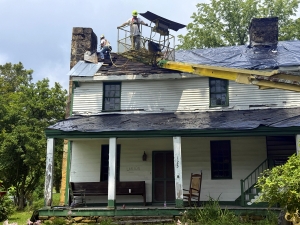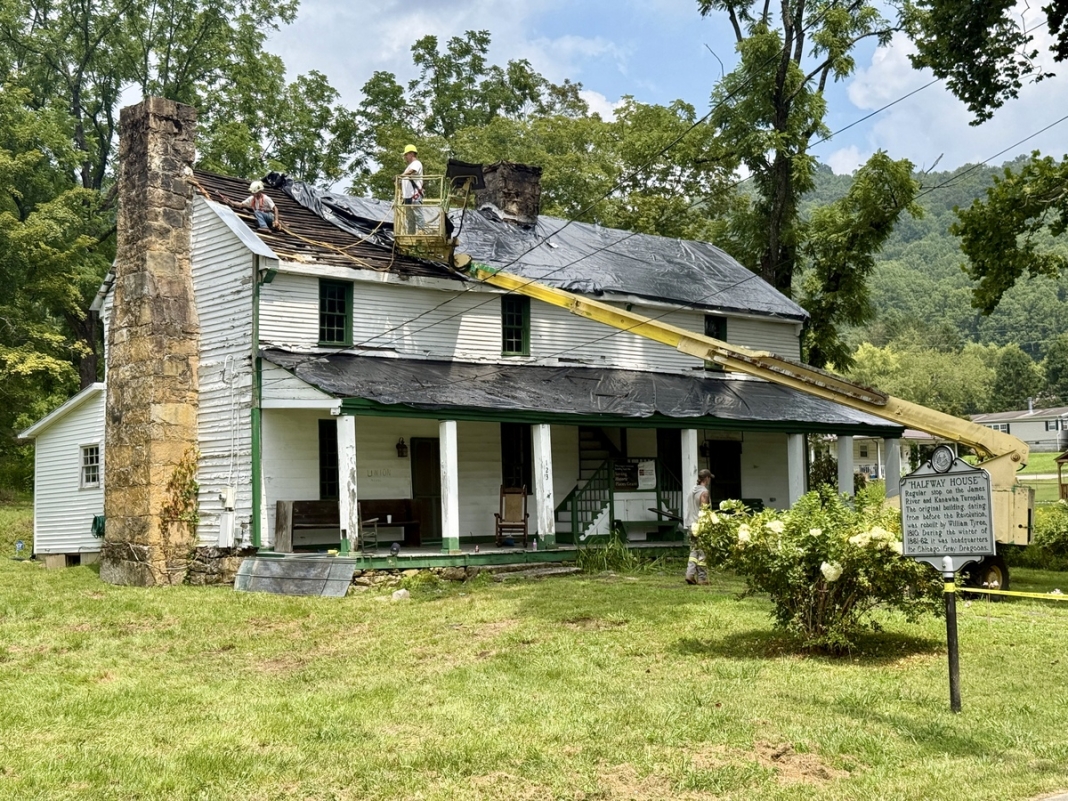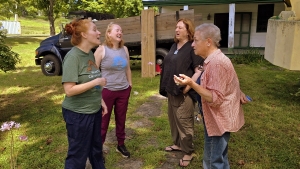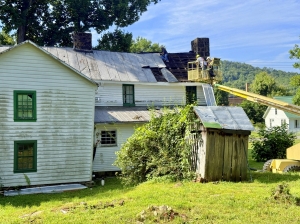ANSTED, W.Va. — The restoration of the Tyree Tavern, a historic landmark near the New River Gorge in southern West Virginia, is now visibly underway in advance of its transition to a museum.
The architectural team employed to manage the restoration, technically termed a historical rehabilitation, began replacing the roof this week, marking the first outwardly observable change in the structure.
Tavern’s historic role as "The Halfway House"

Also known as The Halfway House, the landmark, though largely forgotten in the late 20th century, was a famed stop on a trans-Appalachian route between the James River and Kanawha River and was notably halfway between the towns of Lewisburg and Charleston.
Purchased three years ago by descendants of William Tyree, the tavern and grounds are being restored to their appearance following the Civil War, during which it was used as a headquarters for both northern and southern armies.
Descendants lead the preservation effort
Sisters Laura Moore and Pam Webster-Walsh, who have been managing the restoration and organizing a foundation for the museum since its purchase, say it’s exciting to see the transformation get underway.
The effort so far has been arduous, Moore said, requiring endless historical research and an intense search for funding and technical support, but the result has been worth it.
“I am amazed at how I feel after seeing the old roof coming off, finally being able to witness the restoration I've been dreaming of,” she said. “It’s taken three years to arrive here, but that time was well spent learning about our early history in this place.”
Returning Tyree Tavern to its 19th-century appearance
In addition to the roof repair, Webster-Walsh said construction over the next month will include the removal of modern bathrooms and a kitchen that took the place of a porch, which will return the property to its historic appearance.
“The Tyree Tavern preservation project has finally begun to shape up with work beginning today on the roof replacement and demolition of the modern kitchen and bathrooms,” she said.
“It still amazes me how well preserved this structure is, which has allowed us to undertake this preservation project and explore our West Virginia roots in the process.”
Rediscovering a 200-year-old landmark
In the process of exploring their family history during the COVID pandemic, the sisters happened across the listing for the sale of the property and were surprised to find the homeplace still existed after more than 200 years.
David Sibray, a preservation consultant and agent with Foxfire Realty, said finding the sisters might have been a case of divine intervention.
“Finding stewards for any landmark is never easy, but finding descendants who were ready, willing, and able to buy and restore the tavern was nothing short of a miracle,” Sibray said.
Tyree Tavern: A historic waystation reclaimed
Originally constructed before 1810 by Joseph Skaggs on land patented in 1792, the structure was expanded around 1827 and later passed into the hands of William Tyree in the early 1830s. It operated as a stagecoach stop on the James River and Kanawha Turnpike.
Over the course of the 19th century, it hosted illustrious travelers such as Daniel Webster, Henry Clay, and Vice President John C. Breckinridge. During the Civil War, it served alternately as headquarters for Union and Confederate forces—including the Chicago Gray Dragoons—and even functioned as a makeshift hospital.
Inscribed above the door is the legend, “Headquarters of the Chicago Gray Dragoons.” Confederates and Union forces alike recognized its strategic location and sturdy construction.
Expert restoration led by ZMM architects
Moore and Webster-Walsh have employed architect Blair Frier of ZMM Architects & Engineers to supervise the restoration.
Frier, who famously managed the restoration of Stewart Hall at West Virginia University, said the tavern project was an honor to be entrusted with.
“The ZMM team is especially pleased our client has entrusted us with this culturally and historically significant example of early eighteenth-century architecture,” Frier said, stressing the age of the property, which he said is one of the oldest structures still standing in West Virginia.
Funding and cultural significance of the Tyree Tavern project
Funding for the Tyree Tavern project was provided by grants from the State Historic Preservation Office and the Preservation Alliance of West Virginia.
Danielle Parker, executive director of the alliance, said her organization was excited to help fund the project because of its many benefits to West Virginia culture.
“The Tyree Tavern project is special for two main reasons — because of the people who took on this massive restoration project to restore it to serve as a museum enjoyed for all; and because it also offers a rare, immersive connection to 19th-century building styles and a unique chapter of our state and country's history.”
In concert with the growth of the tourism industry in West Virginia and around the nearby New River Gorge National Park and Preserve, the tavern is expected to become a significant tourist destination.
Moore and Webster-Walsh say they expect the museum to open to the public in 2026.
Sign up to receive a FREE copy of West Virginia Explorer Magazine in your email weekly. Sign me up!






Thank you so much for the article about our hometown. Everybody always thought it was haunted (probably from those who met their demise at the hospital!). We’ve since moved away, but it is always so good to see our hometown receive positive recognition.
Is there a way to make donations to support historic preservation like these in WV? Our state has such a rich historical culture. We need to save as much as possible for generations to come. We’re also one of the few states that still teaches state history and these landmarks can aid in those efforts!
Absolutely! The Preservation Alliance of West Virginia is the state's chief non-profit for the support of preservation. You'll find them online.
Great news about the restoration. Really enjoy reading about WV preserving its history.